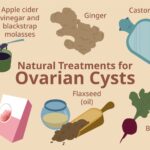A cavitation refers to a hole that is not healed within the jawbone. This is caused by a tooth that has been extracted. Since the teeth that are most commonly extracted are wisdom teeth, cavitations are often found in the site of a wisdom tooth.
It is important for people to be aware of what is going on in their mouths and the effect that such a situation can have. This is essential for insight into the pathological and destructive consequences of routine tooth extractions.
Tooth Extractions and Pathological Defects
- In dental school, a dentist is usually taught that after pulling a tooth, the body of the patient heals the hole that occurs in the jawbone. The reality is that most tooth extractions lead to a pathological defect that is known as a cavitation.
- A periodontal ligament that consists of several microscopic fibers attaches the tooth to the jawbone. While the jawbone is attached to the end of a fiber, the other end is attached to the root of the tooth.
- Once a tooth has been extracted, a breakage of the fibers between the bone and tooth happens midway. This leaves the site where the root had been anchored within the bone or what is commonly called the socket, with a coat of periodontal ligament fibers.
Cavitation- Formation and Infection
- Osteoblasts are specialized cells in a bone and they are responsible for making new bone. Osteoblast serves as the bone former.
- Osteoblasts function actively during maintenance, repair and growth. However, the osteoblasts are prevented from filing in the socket of the tooth with bone by the periodontal ligaments since the fibers that line the socket are a barrier that stops osteoblasts from forming bone. In other words, when osteoblasts see periodontal ligament fibers, they see a tooth.
- Due to the large number of bacteria inside the mouth, they get into the open socket of the tooth easily. When the bone does not have the ability to fill in the socket’s defect, the cavitation that is newly formed becomes infected.
- The lack of blood supply to a cavitation is known as avascular or ischemic, which means without blood supply. The result of this is tissue death or necrosis. Therefore, a cavitation is called a necrotic, avascular, chronically infected and unhealed hole in a bone.
- The defect causes a disruption field on the acupuncture meridian that can impair the health and function of other structures, organs and tissues on the meridian.
- It is important to note that the cavitation contains bacteria which also produces similar deadly toxins that bacteria in root canals produces. These are highly toxic organic substances that have been found in tumors of women who have breast cancer.
The Lurking Killer
It is common knowledge that a root canal can be a traumatizing experience. However, many people may not realize that having a root canal automatically places the category of individuals who may suffer unpleasant and long term effects of the procedure. This is the same situation for people who undergo tooth extractions and have had their wisdom teeth removed or have suffered various injuries to the jaw and teeth and abscesses.
While this does not mean that anyone who undergoes these aforementioned procedures will inevitably develop health conditions as a result, there has been an increase in evidence of a large percentage of people being at significant risk.
What Causes the Problem?
A cavitation is basically an infected hole in the jawbone. The ultimate cause is bacteria that were not sufficiently flushed out or neutralized after an extraction or oral surgery.
- Once bacteria is trapped in a cavity after surgery, it can incubate for several years, leak toxic residue within the blood stream and lead to numerous health challenges that are localized to the jaw as well as other parts of the body. Along with bacteria, this area may host additional harmful elements that include parasites, fungi and viruses.
- When a root canal has been performed on the tooth, the bacteria in the tooth can produce strong and highly neurotoxic chemicals. Research shows that these toxins can combine with heavy metals like mercury and chemicals to form highly potent toxins.
- Neurotoxins can be released into a person’s bloodstream over time and destroy many critical and essential enzymes inside the body. This is a scenario that can occur under what is medically known as normal tooth extraction circumstances. A holistic dentist warns of a silent killer cavitations
- In this situation, the tooth has been removed but what is left behind is the tooth that is responsible for holding the tooth in place and the area is not cleaned properly. Subsequently, toxins remain in the ligament and are gradually secreted into the body, possibly creating serious health issues and symptoms that many doctors may not be able to diagnose. These include neurological issues, endocrine issues, hear issues and fibromyalgia.
Hole in the Bone
- Having various unsavory creatures, fungus and neurotoxic bacteria swimming around the open areas between your gums and teeth may seem bad enough but there is something that is actually worse.
- Cavitations are also known as a hole in the bone, osteonecrosis or osteomyelitis. These are hollowed out holes or areas that consist of a cavern occurring when active bacteria successfully departs from the original surgical site and beings to form within the actual jawbone.
- Each extra hole that is created by this process fills up with decaying tissue and bone that leaves more potential for bacteria and neurotoxins to grow and thrive. This caustic mixture of poison eventually leaks into a person’s bloodstream and can amplify or cause other health problems in the body.
Detecting a Cavitation
- While cavitations can remain undetected for a long time in a healthy individual, jaw pain occasionally occurs in people who suffer from bone lesions. After a sinus infection, jaw pain may manifest and lead to a cavitation being discovered.
- It seems that most people who seek to find out whether they have cavitations also suffer from other major or persistent health issues. The ongoing health condition tends to take them back to the dentist to find ways to reduce the potential toxins that flow into the bloodstream.
- An important step towards diagnosing cavitations involves using various diagnostic tools that may include an ultrasound device that is specially developed for this purpose, MRIs and CAT scans. Muscle testing or applied kinesiology is considered to be the most effective method for detecting cavitations.
Treatment
After proper diagnosis, treating a cavitation usually begins with the surgical removal of any dead tissue, bone and debris. Other treatment options consist of using ozone treatments and lasers as well as other natural techniques and products such as probiotics. Applying these methods helps to create a sterile and clean environment the will promote healing at the post-surgical site and the rest of the body.
Significance of Holistic Dental Care
Good health begins in the mouth and this is why holistic dental practices exist. The dangers that are associated with amalgam fillings along with the concerns regarding toxins that are frequently used in oral care materials have made it necessary to consider other ways to handle dentistry.
Holistic dentistry makes sure that patients are properly cared for and is based on a long-term commitment to general wellbeing. It features numerous benefits that are worth considering when opting for a holistic dentists rather than a traditional dental office. Holistic dentistry goes beyond oral health.
- Your general health and wellness helps to determine the most suitable treatment solution for you. What may be good for the mouth may not be the best option for the whole body. Protecting the natural balance of the body is essential because poor oral health may compromise physical health. Untreated gingivitis and tooth decay can cause other complications like tooth loss, root canals and cancer.
- If you have silver or amalgam fillings, it is important to know that such fillings regularly release mercury-laden and harmful vapors into the mouth. Mercury can be safely removed by a holistic dentist and harmful fillings can be replaced within a safe environment to prevent exposure to toxic vapors.
- A holistic dentist uses materials that do not contain toxins and any treatment that may be harmful to a patient’s health is not considered.
- Using minimally invasive treatments also helps to reduce recovery time to ensure that you can get back to good health as soon as possible.
Final Thoughts
- Modern or conventional dentistry focuses on fixing teeth rather than fixing overall health. Even with all the fillings possible, these only offer temporary solutions. The reality is that dental fixtures such as fillings usually contain toxic and harmful chemicals that are bad for your health.
- Finding a long-term solution requires you to address your health and this is where holistic dentistry is applicable. Instead of relying on quick and temporary fixes, a holistic dentist focuses on your entire body and the relationship that your general health has with oral health.
- Holistic dentists emphasize on health and wellness instead of treating diseases. A large majority of wisdom tooth removals, for example, are not necessary. Wisdom tooth extractions often cause complications that result from the surgical procedure. Wisdom teeth do not have to be removed unless they are causing significant problems.
- The core belief of holistic dentistry is that health should never be compromised.








Pingback: Fence for Your Garden Options - Baby Shower Central
Pingback: Top Tips of Holistic Dental Care - Art League of Hilton Head
Pingback: The Fight Against Holistic Dentist - Awesome Stuff For kids
Pingback: Top Advice on Holistic Dentist - Ntlccc